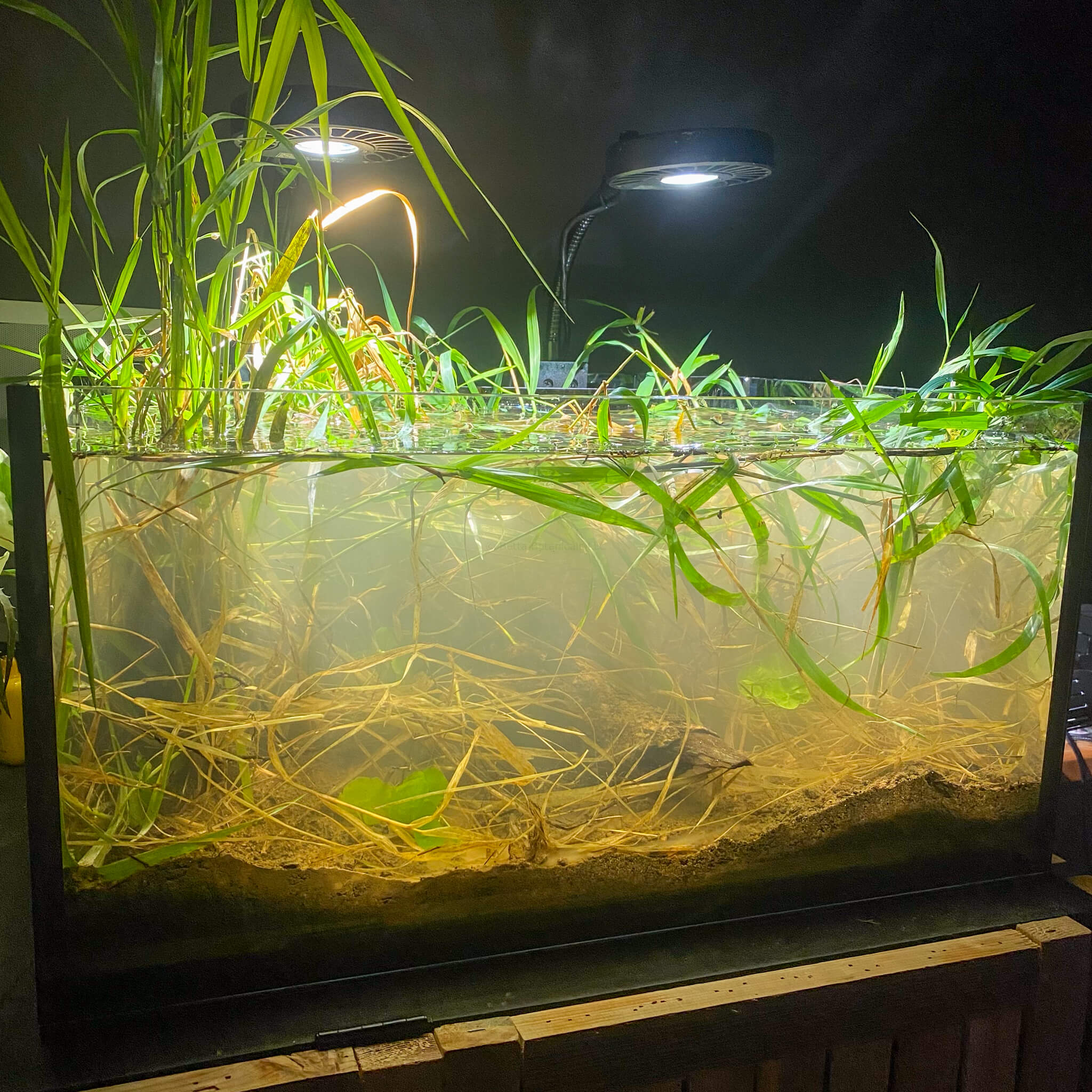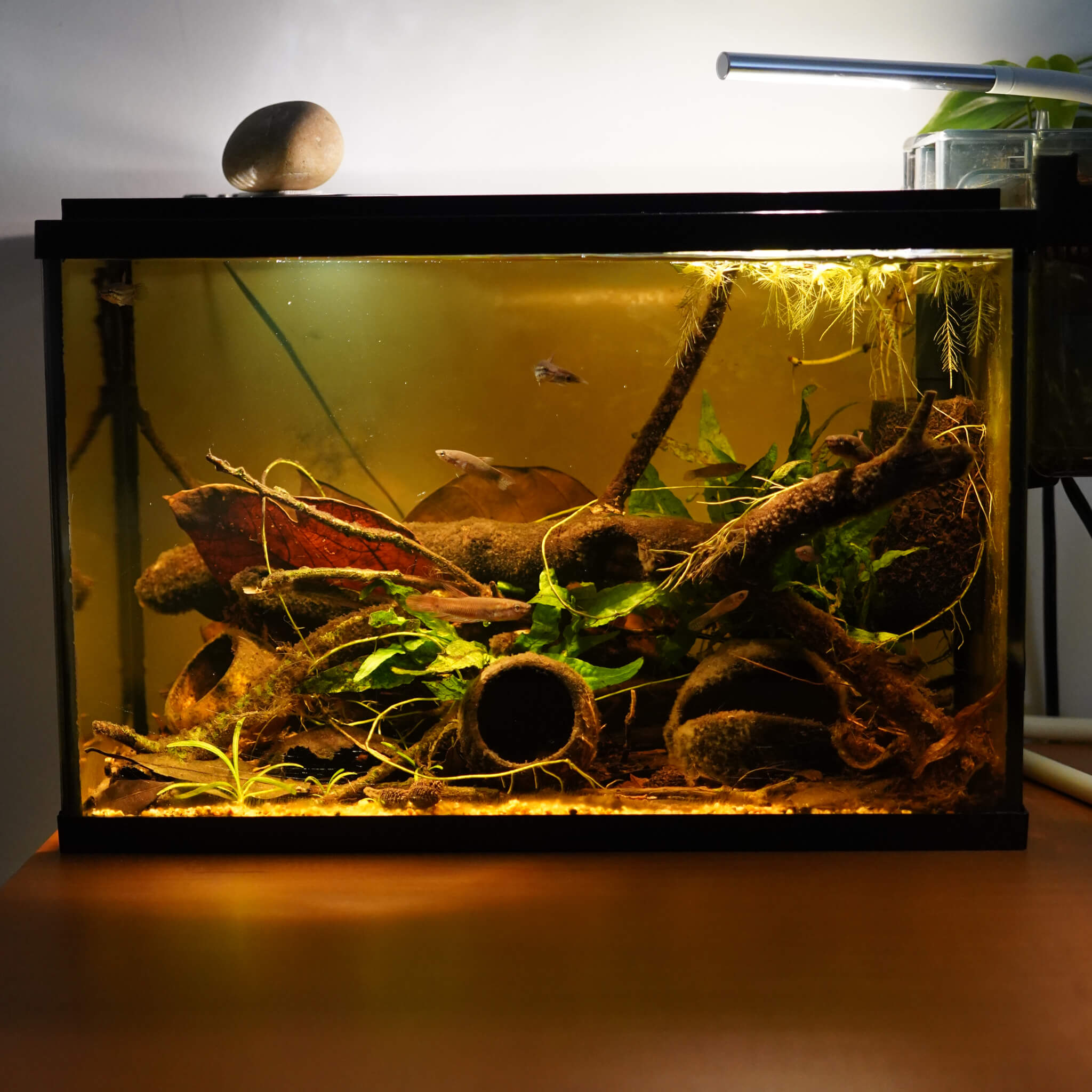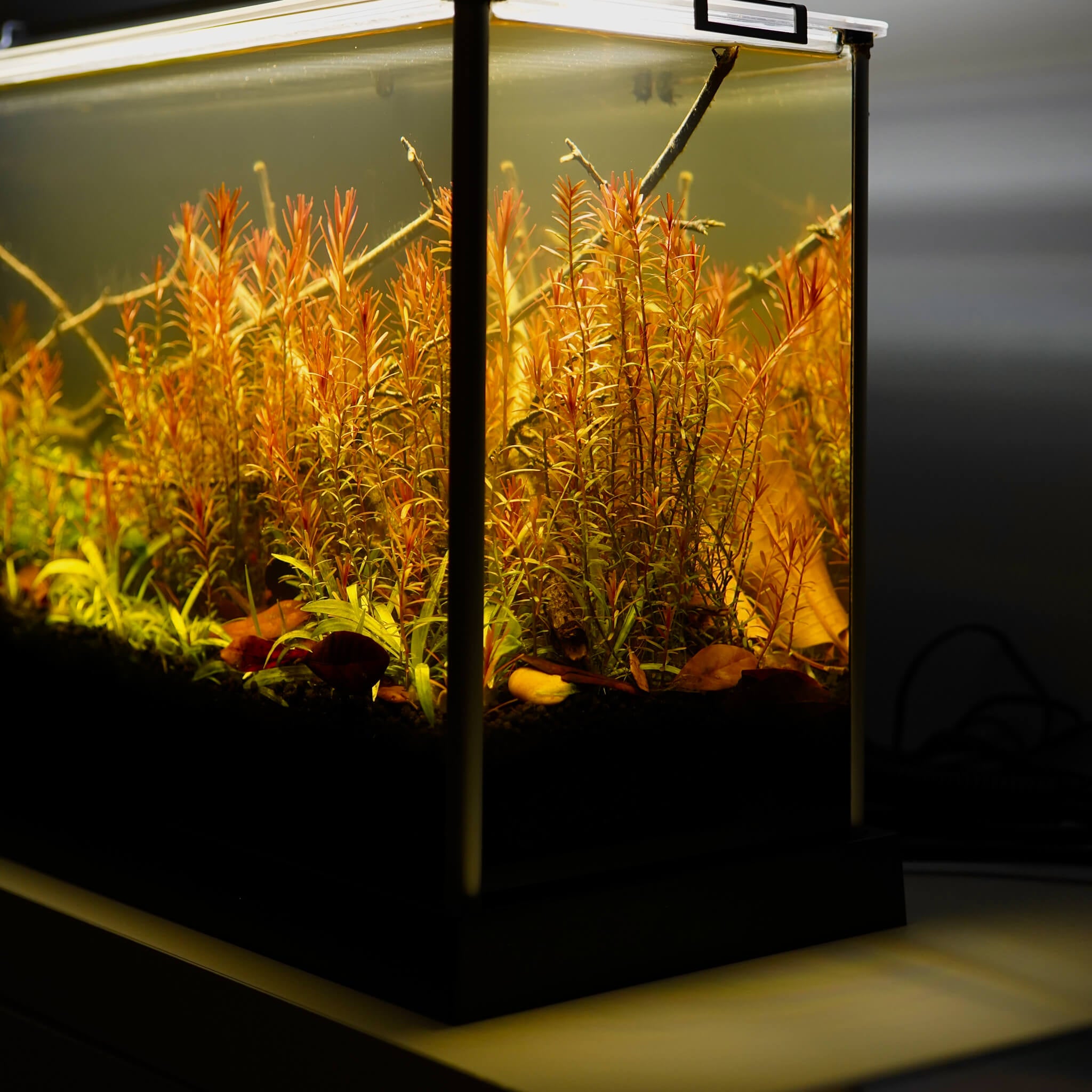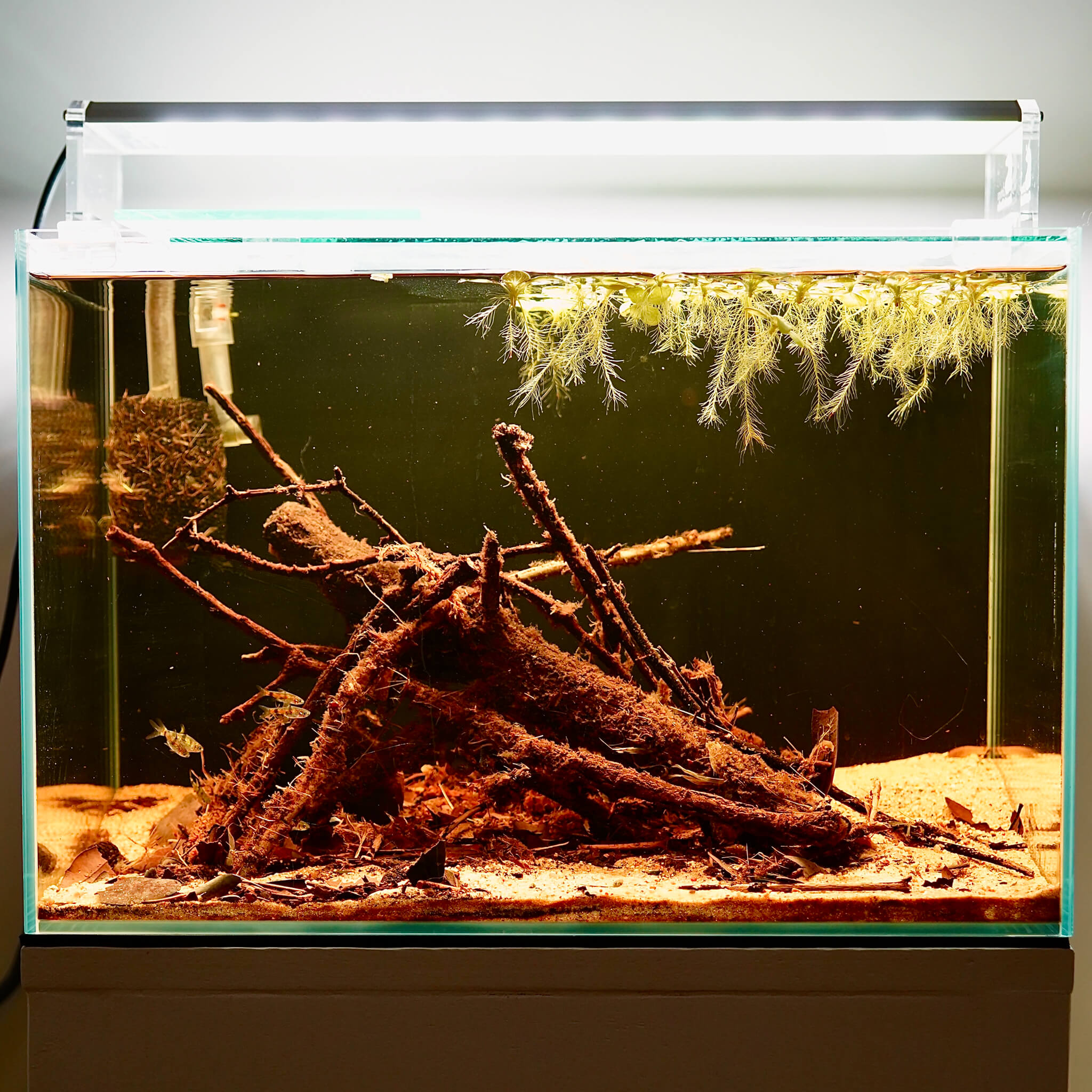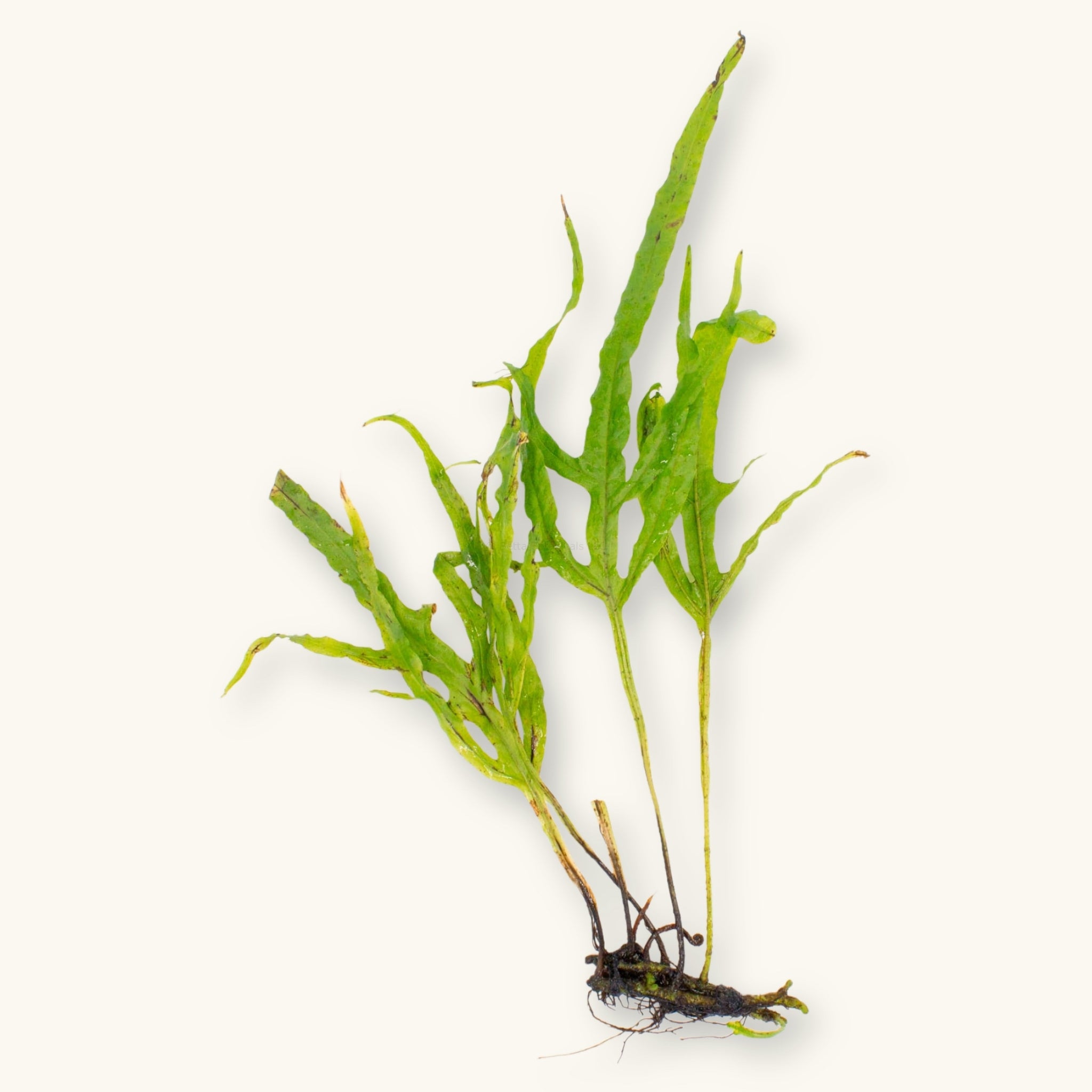
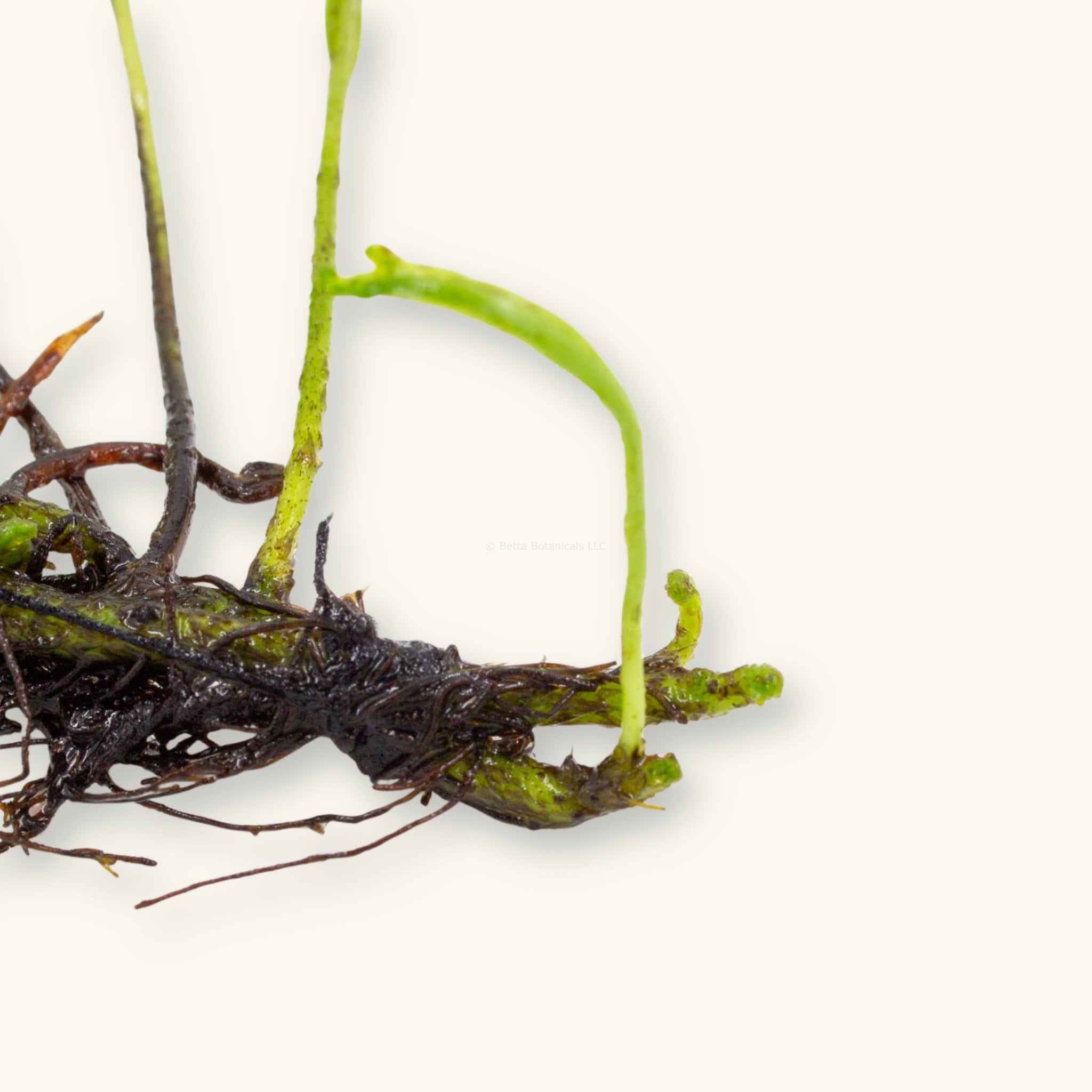
Trident Java Fern | Microsorum pteropus
Trident Java Fern
Scientific Name: Microsorum pteropus
Common Name: Trident Fern, Java Fern
Trident Java Fern is one of the most forgiving yet rewarding blackwater aquatic plants. With its distinct forked leaves that grow out of a rhizome, this beginner aquatic plant is ideal for attaching to driftwood or wedging between rocks. Its name comes from the characteristic trident-shaped fronds that sway gently in the current.
This aquatic fern grows horizontally along a rhizome, sending up narrow, forked leaves that thrive best when attached to wood or stone. We recommend a full-spectrum planted aquarium light set on a low to medium level. Avoid burying the rhizome in substrate to prevent rhizome rot; thread or aquarium-safe super glue is ideal for affixing to your blackwater aquarium hardscape. Over time, you may notice older leaves darken or break down entirely—don’t worry. This is a natural part of the plant’s adjustment process as these plants are often grown emersed before being submerged into the aquarium. This adjustment process often results in new plantlets sprouting from the leaf surface. These can be propagated into new plants.
Caring for Trident Java Fern in Blackwater Aquariums
Sold As: Individual Plant
Care Level: Easy
Lighting Requirement: Low
CO2: Not needed
Growth Rate: Medium
Native Habitat: Southeast Asia (commonly cultivated)
Tint Tolerance: High – thrives in blackwater or clear setups
Tank Placement: Midground or hardscape attachment
All Plants may contain snails or snail eggs. We keep them in all of our tanks for the benefits they provide. Our blackwater aquarium plants are provided by H2OPlants in adherence to their Shipping and DOA Policies. Your curated selection will arrive in their packaging separate from your botanical & merch orders.

Trident Java Fern | Microsorum pteropus
contrast the tint with greenery
While the aesthetic appeal of tinted waters can be quite attractive to us, the recreation of nature—which includes both submerged and emersed plants—is the end goal. Flora helps to improve water conditions, feeding patterns, spawning displays, and territory building.
Aquatic Plant FAQs
DOA Policy
Please ensure that you add a heat pack or cold pack to your orders if temperatures in your area are above 90°F or below 40°F. Click for more info on our DOA Policy.
Are these plants duckweed and snail free?
All Plants may contain snails or snail eggs, small macroinvertebrates, and duckweed. We keep them in all of our tanks for the benefits they provide. We have experienced the presence of small snails, ostracods, daphnia, and beneficial detritus worms.
Are your plants only for tinted water conditions?
Nope! All of our plants will grow perfectly in untinted aquariums that have CO2 and aquasoils, or low-tech planted aquariums. Our selection, though, is optimized for emersed plant growth and low- to medium-tinted water environments.
What is your aquatic plant shipping schedule?
We’re a small company and ship Tuesdays & Thursdays only. Orders placed Wednesday–Sunday → Ship Tuesday. Orders placed Monday–Tuesday → Ship Thursday
Are your plants just for bettas?
Nope. Our aquatic plants are safe for almost all aquariums, terrariums, vivariums, and paludariums. Many of our plants can be grown emersed in filter compartments, vivariums, or incorporated into wabikua.
What are Tannins?
Tannins are natural compounds released by leaves, seed pods, and bark as they decompose in water. They soften water, gently lower pH, and create the characteristic tea-stained tint found in blackwater habitats. But their role goes far beyond color—tannins fuel beneficial bacteria, fungi, and biofilms, which form the foundation of a healthy ecosystem. They also offer mild antifungal benefits and help reduce stress in fish by replicating the natural conditions they’ve evolved in. At their core, tannins are plant-derived antioxidants that connect your aquarium to the same processes at work in wild flooded forests and streams.




